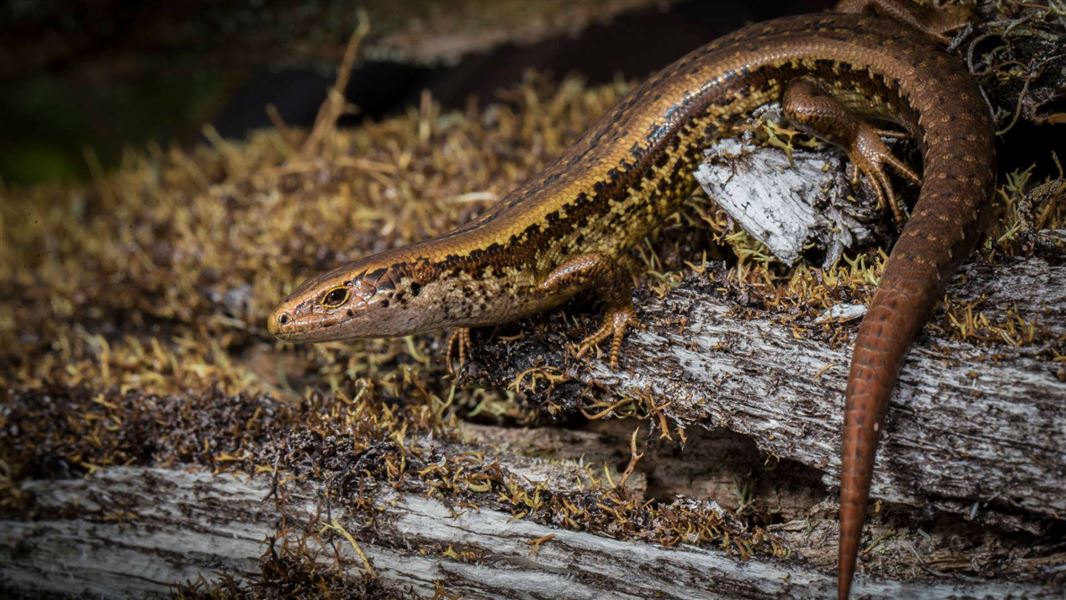
Introduction
The Alborn skink was discovered in the 1990s and has been rarely detected since.Population: Estimated at 30 individuals
National status: Endemic
Conservation status: Threatened–Nationally Critical

We need your help
DOC and the New Zealand Nature Fund (NZNF) are working together to help save the Alborn skink. With only 30 individual skinks, your donation can help.
Learn more about this nature project
NZNF is a charitable trust responsible for funds donated to this project.
Alborn skink conservation
When the Alborn skink (Oligosoma albornense) was discovered in the 1990s, it was already in a critical state. Management of the species was delayed until they could be confirmed as a separate distinctive species.
We're not sure whether they are difficult to detect or extremely rare. Before 2015, there were only 7 records of these skinks. More animals have been detected since we began researching them in 2015.
Mice are a significant predator. Rats, mustelids, and the native weka will also be preying upon skinks.
Our work
Our research aims to identify distribution, life history, and causes of decline. This will enable the development of methods to recover the species.
We know little about their life history, or their habitat preferences as they're only known from highly modified habitat.
Alborn skinks appear extremely tolerant of moist habitat. This has guided us in our ongoing efforts to locate other populations, before committing to management.
Discovered in the 1990s, the Alborn skink has disappeared from one location and is now only found in a pakahi wetland within beech forest near Reefton.
We're not sure whether they are difficult to detect or extremely rare. Before 2015, there were only seven records of these skinks. More animals have been detected since we began researching them in 2015.
Common threats
All introduced mammalian predators eat skinks alive. However, mice are particularly damaging as they are small enough to enter the small spaces lizards live in.
Mice are also one of the last pervasive predators where we have few management tools to control them, yet their impacts are enormous.
Beech masting is a natural phenomenon where beech trees produce excessive amounts of seed. This causes mouse population explosions as they feed on the abundant seed. We are concerned about the survival of the skink during the next beech mast year. Without protection from a predator proof fence the species could go extinct.
There were also a few incidences of 4WDs illegally driving through the site and causing significant damage to the habitat. In 2021, a robust fence was constructed to keep them out.
Report your sightings
Report all lizards sightings to the local DOC office. Significant discoveries are often made by following up observations from locals.
Any records of lizards in Buller and Westland are important and help build our understanding of lizard distribution.